The Royal Navy’s transformation into a mixed fleet of crewed and uncrewed warships is gathering pace, according to new written answers from Defence Ministers outlining progress on the Hybrid Navy concept and the development of the Atlantic Bastion initiative.
In a response to Ben Obese-Jecty MP, Minister Al Carns said the Royal Navy has made “significant early progress in delivering an integrated frigate force comprising crewed, uncrewed, and autonomous platforms.”
The effort is being delivered “through a new, dynamic partnership with industry” and is described as central to the UK’s future anti-submarine warfare capability.
Carns confirmed that the Type 26 frigate will remain “the cornerstone of the Royal Navy’s crewed anti-submarine warfare capability plan” and will be central to the Atlantic Bastion programme, designed to secure the North Atlantic against subsurface threats. He added that “trials of several uncrewed surface and sub-surface systems” are already underway, with the intent that they will integrate directly with crewed ships such as the Type 26.
The First Sea Lord, General Sir Gwyn Jenkins, set out the wider vision behind this shift during DSEI 2025, unveiling Atlantic Bastion as “a groundbreaking concept revolutionising how we protect the UK and its allies in the underwater environment.” Jenkins described a future in which a Type 26 frigate sails alongside two uncrewed escort ships using artificial intelligence to coordinate their movements and missions.
“Together, they provide a three-ship task group in their own right,” he said. Jenkins added that the first of these uncrewed escorts is expected to sail with Royal Navy warships within two years.
In a separate response, Carns said the First Sea Lord had also outlined a “bold new vision for a ‘Hybrid Navy,’” as mandated by the 2025 Strategic Defence Review. This paradigm shift, he explained, “proposes far greater use of autonomous systems, digitisation, and Artificial Intelligence to create a fleet of crewed and uncrewed systems, increasing the mass and lethality of future Naval Task Groups.”



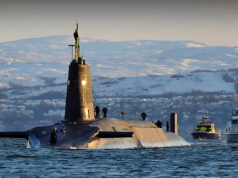
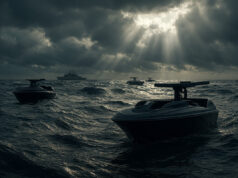
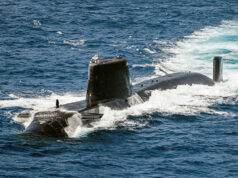

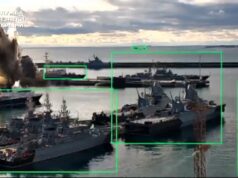
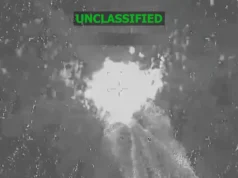
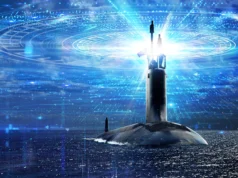
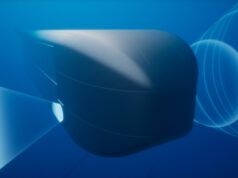
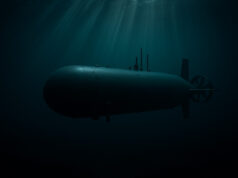


The good aspect of these vessels is the possibility of a rapid procurement process over conventional crewed hulls. Hopefully, the RN can establish a sizable fleet within the next five years or so.
Bet we’ll have 1 at most
You can see the Russians causing a lot of havoc with these unmanned drones out in the Atlantic. The US navy tried these a few years ago in the gulf and Iran just grabbed it and there was f**k all the USN could do about it because anything unmanned in international waters is salvage.
I wonder if any of the geniuses at the MoD have figured this out. The Russians can even pay salvage companies to do it.
It’s actually probably far better just to put the very expensive towed arrays on cheap commercial hulls like the USN does with SURTASS then you don’t have to worry about them getting nicked.
That is the reason for the optionally crewed bit….?
It is for the surface drones but not the underwater drones. If you’re going to start having minimal crew on them then pretty quickly it gets expensive and you may as well buy a commercial vessel with minimal crew to do the job.
The T83 drones are optionally manned.
93 no?
They’ll be able to outrun the Russian warships as they are limited to the speed of their accompanying tugs… 😏
I think the point is the surface drone ships will have a small 10-15 person crew in peacetime so they essentially act as cheap patrol vessels. Then in war they are added to surface groups and CBGs and the crew are removed.. because at that point anyone trying to nick them is a legitimate target.
Exactly
Very well expressed.
Yep I actually think it’s a really good idea to be be honest because it really does provide an answer to two problems that are usually mutually exclusive..
Because unlike the Army and to an extent the airforce the navy has a day job that goes beyond training and preparing for war and providing security. The need for constabulary and sea lane “management” in peacetime requires lots of patrol vessels.. but these suck capital and ongoing costs in crew and maintenance.. but are essentially useless deathtraps in wartime. But actually a global navy like the RN needs a lot of these “navies day job vessels” infact the navy traditionally had about 35 Ocean going mine warfare vessels and around 10 ocean going patrol vessels for about 45 vessels with about 30 active at any time.. that’s about 1000 crew members.. all working on jobbing patrol ships… all of which sucks money and people away from the war-fighting major surface combatant’s
So if there is a way to make a 3000 ton ship that can act as a ocean going patrol ship or home for mine warfare capability and autonomous sensor platforms and only take a crew of 10-15 then instantly be paired up with and having the same kinetic effectors and sensors as a major surface combatant to Double or triple the size of a surface action..what is not to like.. its essentially a no brainier really.
To be honest if we can build these vessels in the same timeframe as the RN could build extra T26 or T31s I would take these.. after all you could crew 10 of these for the same crew costs as a frigate.. and if it can do constabulary work then even provide half the wartime capability of a frigate.. your winning 5-10 times over. But I would still build a couple of extra escorts as well.. if the RN could end up with 9 T26s, 9AAW destroyers ( I would keep the T45s running into the late 40s to support this ) 6 T31s, 6 MRSS and 30 of these optionally manned vessels it would be in a very very good place.
That way the RN could run in wartime or as a near war deterrent on a continuous basis over the long term without stress
1 CBG with a T26, AAW destroyer and 4 new autonomous ships
2 MRSS based intervention groups, with 1 MRSS, 1 T26, 1 AAW destroyer and 4 autonomous ships
2 Surface groups with a T31 and 2 autonomous vessels
That is a lot of powerful surface groups.
Then in peacetime it allows for around 10 patrol deployments, 4 single major warship deployments and smaller peacetime CBG and MRSS deployments.
I have no evidence for this, but it feels like we’re moving too fast.
No evidence? So why did you say it?
Do you understand how this place works?
I shall believe it when I see it with the two years bit.
No excuse for not having an escort fleet of at least 30 Escorts, and we are half that after constant cuts by several successive governments.
I fear though, that will be the excuse. It seems “Oven Ready.”
Yes, 30 Escorts minimum.
Plus some Granada’s, Fiesta’s and a whole bunch of Attack Capri’s with all the Ghia.
Not attack Capris, they couldn’t turn without ending up in a ditch!
Ah, the days of the humble Dagenham dustbins, Ford would have spot welded the wheels on if they could have got away with it.
I worked with a chap who was a Capri Freak, one day he noticed the badge had been altered to CRAPI and wasn’t happy.
I never did own up !
Ford get away with a lot in their time..great flaming pintos…. Working on the assumption that if you know a crash will kill you your less likely to crash..
Absolutely right, 30 should have been the absolute minimum.
Back in 1981, the infamous John Knott cuts suggested cutting to 30 Escorts and upping the SSN fleet to 19.
30 escorts was regarded as the absolute viable minimum number to field 18 /20 active ships.
That hasn’t changed, but the numbers have been trashed anyway!!!
That’s the trouble with our Political set up, none of these “Fuckwits” are ever accountable for their monumental cockups.
Neveer mind , one day in the future a new ship will actually get commissioned
They should be concentrating on upping the main fleet first, drone toys later on. Our adversaries can do the exact same with drone boats, build more, heavily armed and then what’s the advantage? Just one big copy catting mess on the high seas? Do you really want expensive vls, missiles, radar and systems on these drone boats? Why aren’t the crewed ships being built big enough or if so, armed more comprehensively first up? All the mk41s being shown for the T83/T91, why weren’t a pair put onto T45s, even 2x Exls instead of a 24x CAMM farm? That would have been a more substantial uptake for right now. Hopefully the Mk41s for the T31s have been ordered. Hopefully the missiles for them have been ordered!
Because there aren’t the crew for them